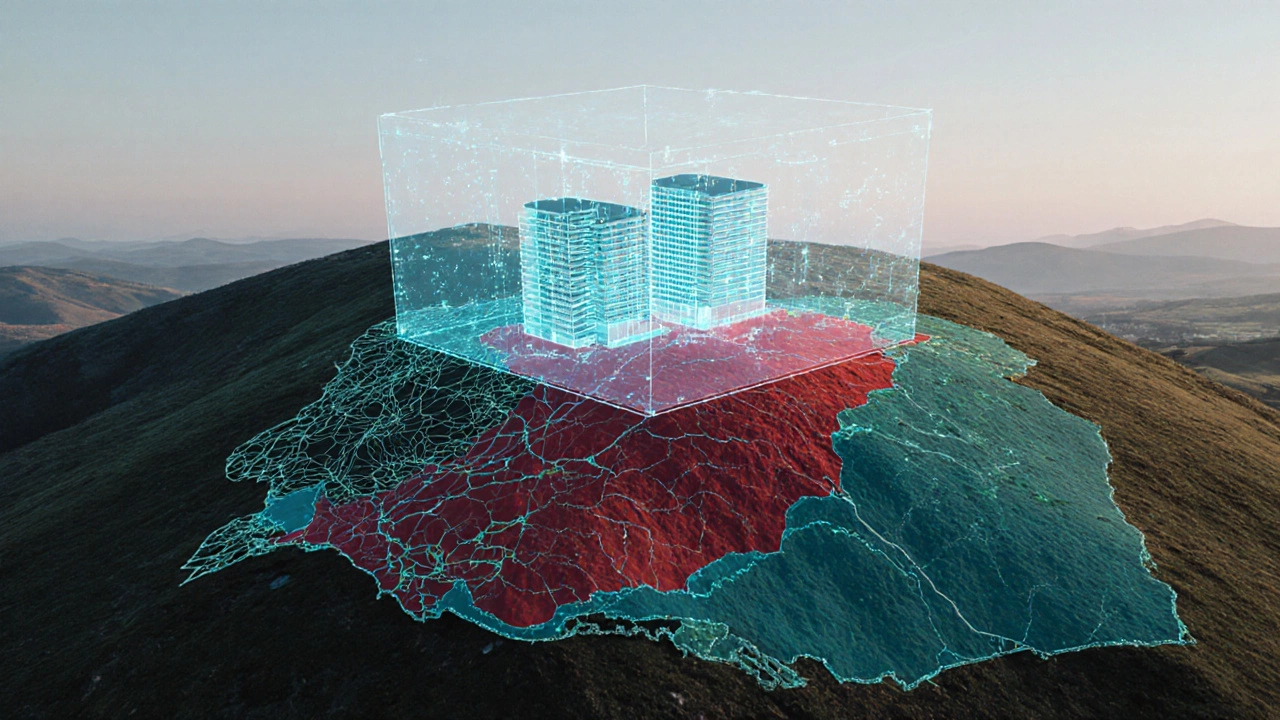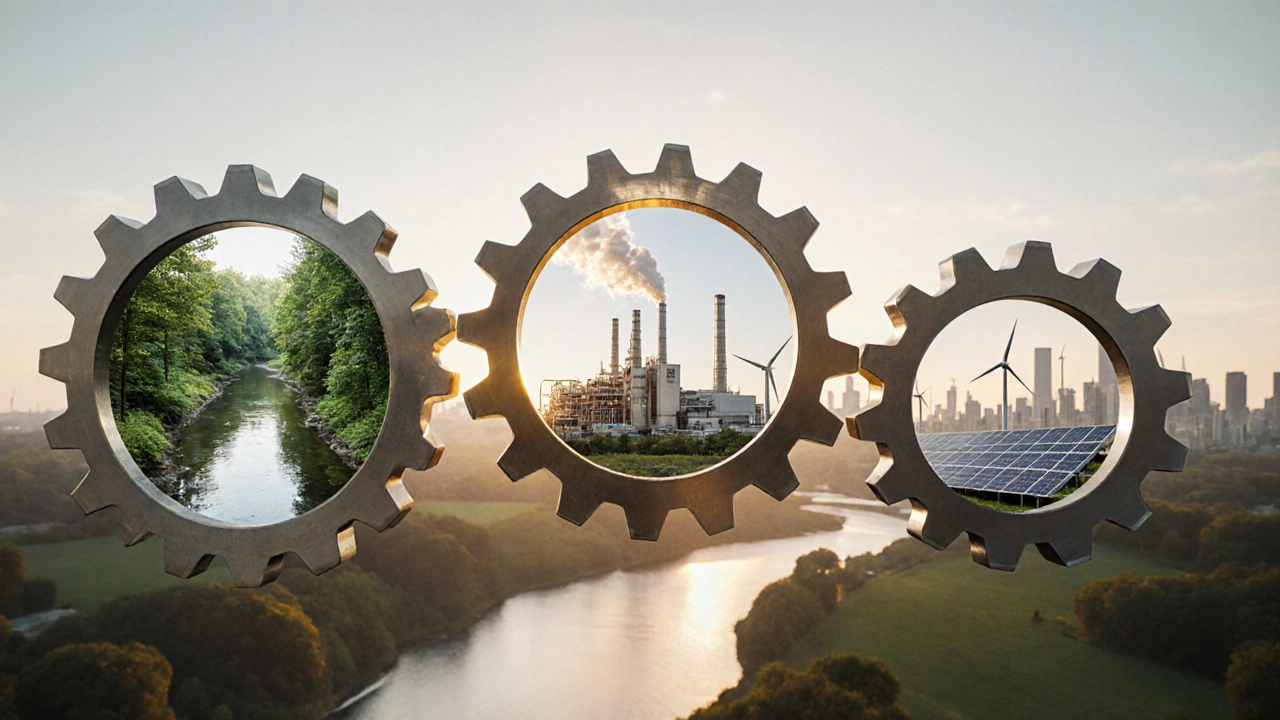Environmental Management Group Checker
Enter a specific environmental practice, action, or initiative, and the tool will determine which of the three core groups of environmental management it most closely aligns with.
When we talk about environmental management is the systematic approach to protecting natural resources while reducing harmful impacts on ecosystems, most people wonder how it’s actually organized. In practice, professionals break the field into three main groups, each tackling a different piece of the sustainability puzzle. Understanding these groups helps you see where policies, projects, or everyday actions fit into the bigger picture.
Key Takeaways
- The three groups are pollution prevention, resource conservation, and environmental planning.
- Each group focuses on a distinct set of objectives, tools, and outcomes.
- Effective environmental management blends all three groups to achieve long‑term sustainability.
- Real‑world examples illustrate how governments, businesses, and communities apply each group.
- Common challenges include funding, stakeholder alignment, and measuring impact.
Let’s break down each group, see how they connect, and discover practical steps you can take whether you’re a student, a small‑business owner, or part of a local council.
1. Pollution Prevention: Stopping Harm Before It Starts
Pollution prevention is the practice of reducing or eliminating waste at its source rather than treating it after it’s created. This group targets air, water, and soil contamination through three primary strategies:
- Source reduction - redesign processes or products so they generate less waste. For example, a manufacturing plant might switch to water‑based paints that emit fewer volatile organic compounds.
- Cleaner production techniques - adopt technologies that use less energy or produce fewer by‑products. Think of using high‑efficiency motors that cut electricity use by 30%.
- Best‑available‑technology (BAT) controls - install filters, scrubbers, or recycling loops that capture pollutants before they leave the facility.
Governments often codify these ideas into regulations. In the U.S., the Clean Air Act is a federal law that sets standards to reduce airborne pollutants, while New Zealand’s Resource Management Act provides a framework for managing land‑related contamination.
Real‑world success story: A dairy farm in Canterbury introduced a manure‑solid‑separation system, cutting the nitrogen runoff into nearby streams by 45% within two years. That’s pure pollution prevention in action.
2. Resource Conservation: Making the Most of What We Have
Resource conservation is the effort to use natural assets-like water, energy, timber, and minerals-more efficiently and sustainably. This group revolves around three pillars:
- Efficiency improvements - upgrading lighting to LEDs, installing low‑flow fixtures, or adopting precision agriculture to reduce water waste.
- Renewable resource integration - shifting from fossil fuels to wind, solar, or hydro power, thereby preserving finite fuels.
- Circular economy practices - designing products for reuse, repair, or recycling, so materials stay in use longer.
Key policy tools include carbon pricing mechanisms and water allocation licenses. For instance, the European Union’s Emissions Trading System caps total greenhouse‑gas emissions and lets firms trade allowances, incentivizing companies to cut their carbon footprint.
Case in point: The city of Wellington introduced a “Zero Waste” initiative that encourages households to compost organic waste. Within three years, organic landfill input dropped by 60%, saving the council millions in disposal fees.

3. Environmental Planning: Shaping the Landscape for the Future
Environmental planning is the forward‑looking process of integrating environmental considerations into land use, infrastructure, and development decisions. It works at the intersection of policy, science, and community values. The core elements include:
- Strategic environmental assessments (SEAs) - broad‑scale reviews that evaluate the cumulative impacts of policies or programs before they're implemented.
- Environmental impact assessments (EIAs) - project‑level studies that identify potential effects and propose mitigation measures.
- Spatial planning tools - GIS‑based maps that help planners locate protected habitats, flood zones, or renewable‑energy sites.
Planning isn’t just for governments. Large corporations run their own environmental planning units to align new factories with biodiversity goals. A notable example is a tech company that used GIS mapping to avoid building a data center on a critical bird migration corridor, preserving the habitat while still meeting its expansion targets.
How the Three Groups Work Together
Think of the three groups as gears in a machine. Pollution prevention reduces the load on waste‑treatment systems, resource conservation keeps the supply side efficient, and environmental planning ensures the whole system is placed where it does the least harm. When one gear stalls, the others compensate, but optimal performance occurs when all three turn in sync.
Here’s a quick visual comparison:
| Group | Main Goal | Key Tools & Techniques | Typical Stakeholders |
|---|---|---|---|
| Pollution Prevention | Eliminate waste at source | Source reduction, BAT controls, cleaner production | Manufacturers, regulators, NGOs |
| Resource Conservation | Use natural assets sustainably | Efficiency upgrades, renewable integration, circular design | Businesses, municipalities, consumers |
| Environmental Planning | Guide development to minimize impact | SEAs, EIAs, GIS spatial analysis | Planners, developers, community groups |
Getting Started: A Practical Checklist
If you’re looking to embed the three groups into a project or organization, follow this short checklist:
- Identify the scope. Is the focus on a single facility (pollution prevention) or a whole region (environmental planning)?
- Set measurable targets. Use SMART criteria - e.g., cut facility‑level CO₂ emissions by 20% in three years.
- Choose the right tools. For waste reduction, adopt a life‑cycle assessment; for water savings, install smart meters.
- Engage stakeholders early. Bring community members, regulators, and staff into the conversation to avoid later roadblocks.
- Monitor and report. Track performance with key indicators like waste diverted, energy saved, or habitat preserved.
Applying these steps ensures each group contributes effectively and the overall program stays on track.

Common Pitfalls and How to Avoid Them
Even seasoned practitioners stumble. Here are three frequent challenges and quick fixes:
- Fragmented efforts. Teams may work on pollution control without linking to resource‑saving initiatives. Solution: Establish a cross‑functional steering committee that reviews all three groups together.
- Lack of reliable data. Without accurate emissions or water‑use data, targets become guesses. Solution: Invest in basic monitoring equipment and train staff on data collection.
- Regulatory fatigue. Constantly changing rules can overwhelm small businesses. Solution: Partner with local NGOs or government advisory services that provide up‑to‑date compliance guides.
Future Trends Shaping the Three Groups
Technology and policy are moving fast. Expect to see:
- Digital twins for environmental planning. Virtual replicas of ecosystems help predict impacts before any ground is broken.
- AI‑driven optimization for resource conservation. Machine‑learning models can fine‑tune energy use in real time.
- Extended producer responsibility (EPR) legislation. More countries will require manufacturers to take back products, boosting circular‑economy efforts.
Staying aware of these trends helps you keep the three groups aligned with the latest best practices.
Wrapping Up
Understanding the three groups-pollution prevention, resource conservation, and environmental planning-gives you a clear roadmap for any sustainability effort. Whether you’re drafting a local council ordinance, retrofitting a factory, or simply looking to reduce your household’s waste, the same principles apply. By tackling problems at their source, using resources wisely, and planning with the environment in mind, we can create a healthier planet for future generations.
environmental management is not a single task; it’s a coordinated set of strategies that, when combined, turn good intentions into real, measurable results.
Frequently Asked Questions
What exactly distinguishes pollution prevention from waste management?
Pollution prevention aims to stop waste from being created in the first place, while waste management deals with handling waste after it’s generated. Prevention is generally more cost‑effective and has a lower environmental footprint.
How can a small business start a resource‑conservation program?
Begin with an energy audit to pinpoint inefficiencies, then implement quick wins like LED lighting, low‑flow faucets, and a paper‑reduction policy. Track savings monthly and set progressive goals.
Is environmental planning only for large infrastructure projects?
No. Even community gardens benefit from basic planning-choosing a site with good sunlight, soil quality, and minimal runoff. The scale changes, but the core process of assessing impacts remains the same.
What metrics should I use to measure success in each group?
For pollution prevention, track kilograms of waste avoided. In resource conservation, use energy‑intensity (kWh per unit of output) or water‑use intensity. For environmental planning, count the number of assessments completed and the percentage of projects that meet mitigation criteria.
Can the three groups be applied in personal daily life?
Absolutely. Choose reusable products (resource conservation), avoid single‑use plastics (pollution prevention), and consider the environmental impact before big purchases or home renovations (environmental planning).





